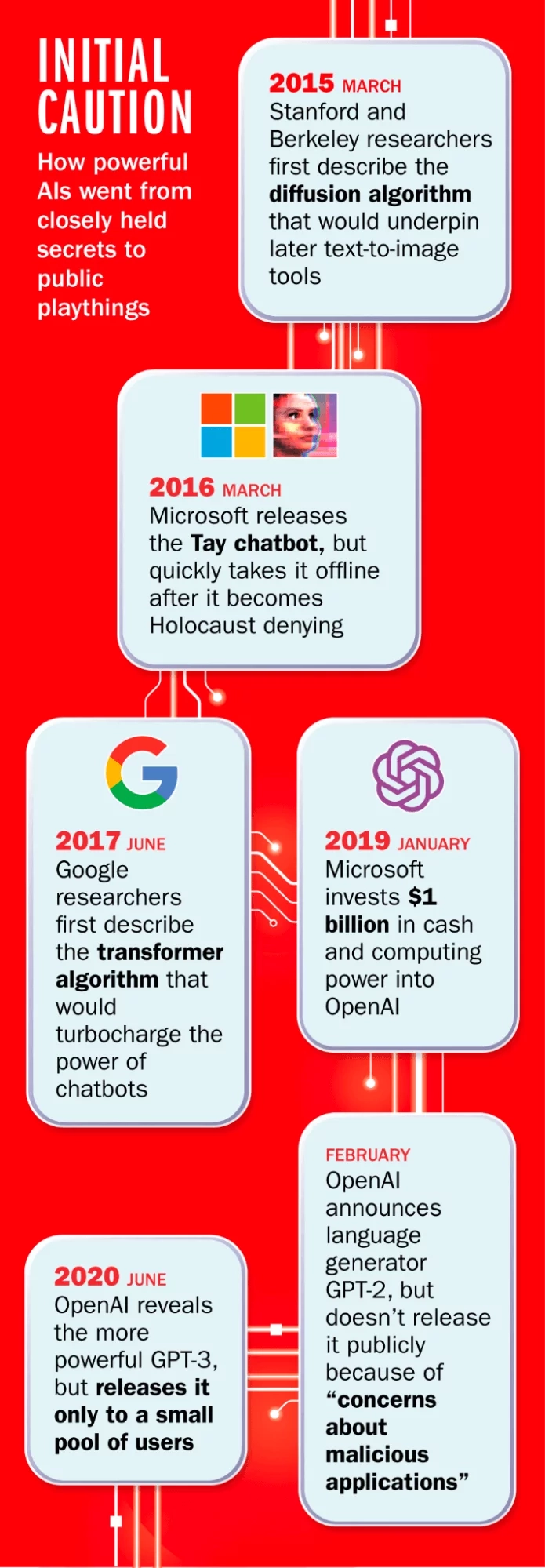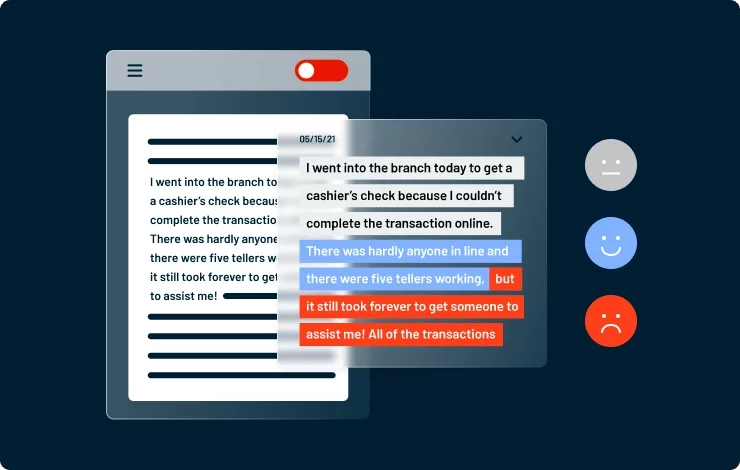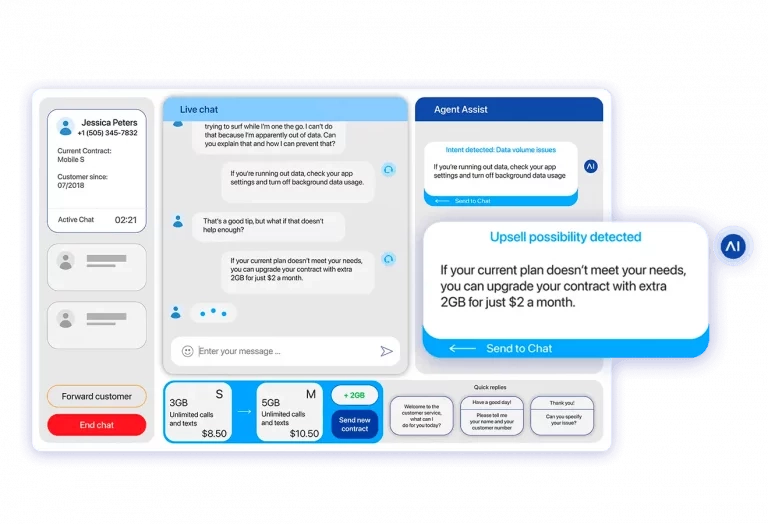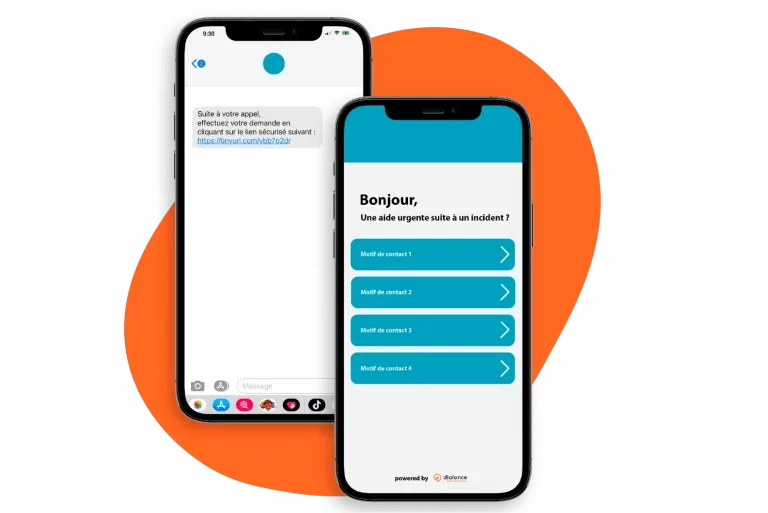5 AI-Powered Contact Center Automation Trends for 2025



Only 27,3% of companies are using the technology for their customer-related activities, with another 47,2% planning to do so this year, according to Metrigy’s Customer Experience Optimization:2023-24.
Many tools these hubs rely on (including knowledge bases and agent assists) have the technology baked in, suggesting that many centers are already using AI without realizing it.
Automation has been around for a while now, even without many of us noticing. Thanks to some technological and interface advances, it’s thrusting itself more into the spotlight this year. To help you understand the most important updates, we’ve rounded up the key automation trends that will impact contact centers.
In this article, you’ll learn about five of the most up-to-date contact center automation trends and the huge part AI is already playing within them.
Your contact center is the hub of all customer interactions across various channels. While these hubs do include call centers, they also cover email, social media, and live chat interactions.
Contact center automation enlists technology to take over certain repetitive tasks from human employees. For example, assigning agents to support cases or reaching out for customer feedback.
This software can also help contact centers with smaller teams to meet customers where they are.
Modern consumers use roughly nine different communication channels when contacting businesses. And 93% of customers will spend more with brands available on their preferred channel.
But meeting customers where they are when they want isn’t always possible with a small team.
That’s why contact center automation technology enlists software and AI-powered tools to speed up time-consuming tasks and enhance the customer experience simultaneously.
It’s important to note here that “automation” and “AI” are terms used interchangeably, but they’re different. One enables software to follow pre-defined rules, while the other helps it to think like humans.
Before diving into our five contact center automation trends, it’s important to note that AI is the star of the show.
This year, it feels like you’re constantly hearing about AI and tools like ChatGPT. But while the hype is new, the tech is less so.

Source: Time
At a basic level, AI has been around for some time (building cars, for example), but the tech has recently become more advanced and widely available. Time calls it “the most important technological breakthrough since social media.”
AI is now far more accessible, enabling more people to innovate and get creative with the tech, which is why it’s such a hot topic.
Automation and AI work together and co-exist on a spectrum, from carrying out repetitive, data-based tasks to predicting customers’ needs before they even know what they are.
Each of the trends below use these two forms of technology in multiple ways:
Using these processes, here are some of the use cases of AI and automation within contact centers:
While you may already be using some of these, there are more ways AI-powered automation is positively impacting agent and customer engagement within contact centers.
An omnichannel approach to customer support is no longer a “nice to have.” Since the pandemic, 90% of customer service leaders say customer expectations have increased to an all-time high.
According to McKinsey, “Customers want an always-on, personalized, omnichannel experience.” To make that happen, you need AI-powered workflows fueling your omnichannel contact center operations.
This can involve three types of cloud-based apps:
These types of contact center software allow support reps to communicate with customers through a single cloud platform. Here’s how they differ from on-premises contact centers:
| On-premises contact center | Cloud contact centers |
|---|---|
| More upfront costs followed by ownership | Lower initial costs but high monthly fees |
| The organization handles maintenance and updates | Cloud provider handles maintenance and updates |
| Need internal staff to keep it running | Cloud provider keeps it running |
| Harder to scale for remote workers | Easy to scale for remote workers |
| The organization has full control over the contact center | Cloud provider has partial control over the contact center |
This can also streamline employee collaboration and make strategies like intelligent swarming possible.
When expectations rise, customer issues become more complex. Intelligent swarming (also called “case swarming”) upgrades the traditional tiered support model and allows different departments to share knowledge with support teams, without them having to escalate the case.
Some 86% of people expect conversations with agents to seamlessly move between support channels, including calls, social media messaging, email, and live chat. Using XCaaS software or swarming means the customer doesn’t have to repeat their issue multiple times.
Using the intelligent swarming method along with Slack, Salesforce’s support team was able to close cases 26% faster. Here’s what this looked like in action:

Source: Slack
While team members collaborated behind the scenes, it appeared to the customer like one seamless conversation with one agent.
Combining this swarming method with AI-powered search can also help agents quickly tap into the best organizational resources to solve the problem.
When a support agent opens up a conversation, they should be able to see the entire history from any channel and find important information quickly within the chat log.
Omnichannel contact centers that use automation solutions (such as automatically-synced conversations) can help make this a reality.
Some 71% of consumers now expect companies to deliver personalized interactions, and 76% get frustrated when this doesn’t happen. However, using basic segmentation to generate a customer’s first name with a meta tag (e.g., %FIRSTNAME%) is no longer impressive—customers expect it.
At its core, hyper-personalization harnesses the power of AI to make the most of data to improve customer experience.
Hyper-personalization in contact centers can take many forms. In one example, bots can track real-time conversations with customers and feed your agents prompts based on the customer’s unique experience or emotional needs.
Around 76% of business leaders want to create more robust customer records by auto-populating customer information. But that can only happen when different departments collect and share data.
To achieve this and create truly personalized experiences your customers appreciate, you need to centralize your customer data.
That means using real-time CRM (customer relationship management) software or a CDP (customer data platform) to integrate with channels like email, social media, and live chat.
You can even overlap both technologies. Here’s how a CRM and CDP compare:

Source: Phase2
Once you have a data-rich base for each of your customers, you’ll find it much easier to personalize their experiences and experiment with other strategies.
Zendesk’s CX Trends 2023 report suggests, “One underutilized tactic is to use AI-driven technology that enables support organizations to predict intent and sentiment, which can greatly boost customer understanding.”
Sentiment analysis uses technology to identify and categorize opinions expressed within text to determine the writer’s attitude and feelings in different sections.
Here’s how sentiment analysis specialists Lexalytics use this kind of technology to filter language by positive, negative, and neutral emotions:

Source: Lexalytics
For audio and voice recordings, these are usually transcribed and then put through the same system.
However, other forms of AI can monitor calls to recognize increases in pitch or when agents and customers are talking over each other.
Health insurance provider Humana has been using this technology for years to send the agent real-time alerts to adjust their tactics.
Monitoring customers’ moods, wants, and needs can help you meet these opinions, adjust your response, and improve customer satisfaction in the moment.
You can also use AI-powered analytics to predict future outcomes and drive personalization.
Predictive analytics uses historical data to predict future outcomes. You can use these in tandem with machine learning to create hyper-personalized offers.
Prescriptive AI tries to predict what customers want before they know it themselves. Instead of analyzing an interaction once it’s complete, AI can analyze a conversation in real time and allow agents to pivot based on sentiment.
Using natural language processing, a virtual assistant can even make actionable recommendations for the agent.
For example, here’s how conversational AI platform Cognigy combines sentiment with CRM data to recommend tailored customer offers to human agents:

Source: Cognigy
You can detect customer behavioral patterns with AI, too, and use the information to:
However you choose to use your selected software, the success of your personalization efforts depends on the quality of data you feed it. Put the work in to make sure all data is accurate and extensive from the get-go for truly helpful AI.
According to Zendesk, 72% of customers want immediate service. (Your average handle time metric is a good indication of whether or not you’re meeting this demand.)
At the basic level, this can include a page with frequently asked questions (FAQs). However, more detailed self-service options like knowledge bases can give customers additional control over their own support with in-depth answers.
As well as directing the customer journey, it helps to enhance agent productivity as customers aren’t asking them for readily-available information.
For example, ServiceNow’s team worked together to create over 10,000 new knowledge base articles. As well as being accessible to both customers and agents, it helped agents solve cases 52% faster.

Source: ServiceNow
While knowledge bases can be extremely helpful, they may not work for more complex products or services. In these cases, you could also offer video assistance as part of your self-service support.
Around 96% of people have watched an explainer video to learn more about a product or service. But what about more complex problems that need human intervention?
Instead of sending out a rep, Apizee allows you to send a one-click invite by email or SMS to help customers with face-to-face guidance. It’s another way of creating hyper-personalized experiences.
When social landlord Habitat Audois started implementing this type of video support, many tenants were able to diagnose and fix technical problems by themselves and reduce waiting times by 90%.

An AI-powered chatbot offers support that’s somewhere between knowledge bases and video assistance.
By 2026, Gartner projects that technology will automate one in 10 agent interactions. However, this shouldn’t feel like a series of disjointed interactions.
When you have conversations with friends, it’s a back-and-forth exchange. You expect them to remember your past discussions and factor in this previous information when sharing advice.
People expect conversations with businesses to share the same traits. It’s why an omnichannel, personalized approach works so well.
Conversational support is fluid, natural, and gives customers control of the exchange.
When customers get in touch, they aren’t thinking about the channel they’re contacting you on or who is going to fix their issue. All they care about is having a conversation that resolves it.
By 2026, Gartner predicts that conversational AI within contact centers will also reduce agent labor costs by $80 billion.
Here’s NatWest’s digital assistant Cora in action:

Source: NatWest
“She” can help with changing your details, managing your mortgage, and reporting lost cards.
In the next five years, the bank is planning to turn the chatbot into “a full virtual assistant and a personal concierge” that provides proactive insights and personalized recommendations.
Giving these virtual agents access to your company’s knowledge base would also allow the software to respond faster and more accurately than it would be able to without.
It adds speed and convenience for both sides. However, there should always be a path to human intervention for more complex problems.
It’s also important to be aware of the risks of any type of machine learning. Data security specialists Cyberhaven recently discovered 11% of data that employees paste into ChatGPT is confidential.
For example, people have been asking the software to summarize or analyze pages of patient medical records and secret company strategies.
One of Amazon’s attorneys even had to put out a warning to employees not to share this type of data with the software, saying: “we wouldn’t want [ChatGPT] output to include or resemble our confidential information (and I’ve already seen instances where its output closely matches existing material).”
To avoid your staff sharing this kind of material, it’s wise to create guidelines and policies around automation, especially if you’ll be using ChatGPT for customer service. That way, your entire team is on the same page and the risk of this is minimal.
While there are concerns about the amount of data chatbots have access to, big corporations are putting in processes to protect users. For example, Microsoft protects privacy with encryption and “only stores and retains information for as long as is necessary.”
It also offers users control over their search data through the company’s privacy dashboard.
Interactive voice response (IVR) is an automated phone system with call routing capabilities.
This technology manages inbound callers by collecting information about a customer query with pre-programmed trigger words and then transferring them to the right team.
This automation benefits both sides. It cuts down the basic, repetitive workload for call center agents while customers feel like employees are considering their problems.
Visual IVR is an upgrade of this technology. This self-service contact center solution turns customer calls into interactive visual journeys.
Here’s what visual IVR looks like using Intelligent Contact Hub DialOnce:

Source: DialOnce
Instead of listening to several pre-recorded prompts, customers get an outbound SMS link to an on-demand, no-download app that walks them through fixing their issue.
As well as reducing the number of “low-value” phone calls to agents, it cuts down queues and hold times for those with more complex problems.
This automated contact center technology can increase profitability by handling time-consuming, repetitive issues. It can also send follow-up surveys to collect customer feedback.
Using these IVR systems to route your call flow is not a new call center trend. However, smart IVR (or conversational IVR) is.
Previously, the programmed bot would stumble over extra words or unclear queries. However, AI has enabled the technology to more easily recognize and understand normal speech.
Instead of using short phrases or pressing numbers on a keypad to navigate through menus, customers can use full sentences and normal speech patterns.
This software then gathers and analyzes data using natural language processing as it responds and asks questions. It also progressively personalizes a customer’s options based on their past needs.
Here are the components of conversational IVR and how it works:

Source: GetVoIP
Although it can still route calls to live agents, its primary goal is to eliminate the need for this.
Compared to standard IVR, the updated smart IVR has many more benefits. Here’s how:
| Standard IVR | Smart IVR |
|---|---|
| Support depends on live agents’ schedules | Provides 24/7 real-time support |
| Relies on pre-programmed trigger words and phrases | Customers can request support in different ways and languages |
| Updating responses is a labor-intensive human process | Stores and learns from data automatically to personalize each customer’s experience |
| Can only understand topics humans have programmed it to understand | Can provide support on niche topics |
This more advanced type of intelligent routing frees up agents to deal with more complex problems and lets customers serve themselves with smart automation.
When you listen to and implement customer feedback, customers realize their opinion matters. As a result, they feel more involved in your business and more likely to become advocates.
Automated customer feedback software can make asking for and responding to opinions easy. For example, you could automatically send out predefined replies with discounts or referral links when customers trigger events (like sending feedback).
As well as building these relationships, tracking the feedback on an automated dashboard can help reveal levels of customer satisfaction at a glance. This enables product and customer success teams to see where there is room for improvement quickly and easily.
Instead of a manual process that only captures a small percentage of responses, AI tools can collect 100% of data from customer experience management (CXM) metrics like:
Standard CSAT measures customer experience based on a simple survey question: “How would you rate your experience with the service you received?”
Users then select a set answer from one to five that represents “very unsatisfied” to “very satisfied”:

Source: AirOps
This would be an effective system if traditional survey response rates weren’t only around 5%.
That’s why companies like cloud communication platform Dialpad now use AI-powered CSAT to cover 100% of conversations.
The technology uses deep learning to detect sentiment from call transcripts between agents and customers. It can use this to predict CSAT scores with an 87% accuracy rate.

Source: Dialpad
Historically, businesses would make big-budget customer satisfaction decisions based on answers from a small percentage of customers. AI-powered CSAT allows you to use real-time insights from all interactions to improve CX.
As well as customer feedback, you can use these automated tools to track and compare agent performance and optimize your contact center operations.
It allows employees to monitor their own performance and empower themselves instead of having weekly or monthly evaluations with management.
Here’s how TheLoops agent monitoring delivers automatic performance scores:

Source: TheLoops
One study found AI assistance also increased agent productivity by 14%. Low-skill workers saw the most significant gains with the tools helping them to complete their work 35% faster.
The technology is also beneficial for training newer contact center agents (especially in light of the rise of remote working). The same study found that using AI tools helped agents with two months of experience perform as well as those with six months.
You can also use AI machine learning to analyze how your top-performing employees handle customer interactions. Then use this information to train the rest of your agents and raise everyone’s game.
While you shouldn’t confuse the roles of AI and automation, their relationship will only continue to overlap and integrate as contact centers evolve.
While automation takes care of routine tasks to help agents be more productive, AI is starting to help customers have more engaging, personalized, and satisfying conversations. However, the human element still remains crucial for guaranteeing customer loyalty and maintaining overall quality.
According to Michael Finnerman, the key is to find a balance between openness toward AI’s possibilities while maintaining realistic expectations of what the technology can successfully accomplish. He echoes Irwin Lazar‘s sentiment that it’s important to exercise restraint at this current period when “using this new technology as a helper, not a replacement for, real human skills” in contact centers.
It’s essential to stay up to date with contact center automation trends as the technology is quickly evolving. A feature that may seem like wishful thinking today could be a reality in weeks or months.
If you’d like to improve your customer support offering with existing technology, get in touch to learn more about Apizee’s one-click video assistance.
Explore key findings from the Genesys State of Customer Experience report. Learn how AI, omnichannel strategies, and video chat are transforming CX and enhancing customer satisf...
The State of Customer Experience report by Genesys : Key Insights and Trends
27 Mar 2025
Despite AI and automation, customers still prefer to speak to a human for support. Discover why human interaction remains essential for great customer service.
Why Customers Still Want to Speak to a Human in Customer Service
17 Mar 2025
Discover the top customer experience influencers in Europe, shaping the future of CX and customer service.
Top 100 Customer Experience Influencers to follow
10 Mar 2025
Interested in our solutions?